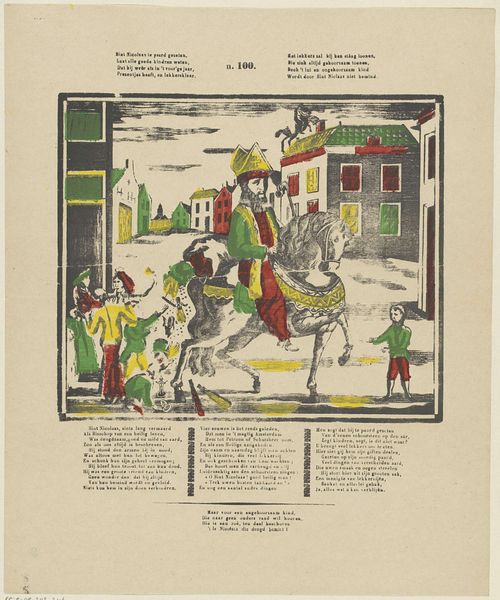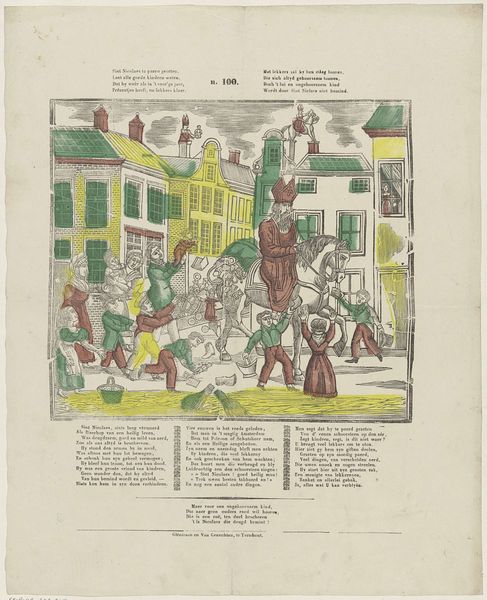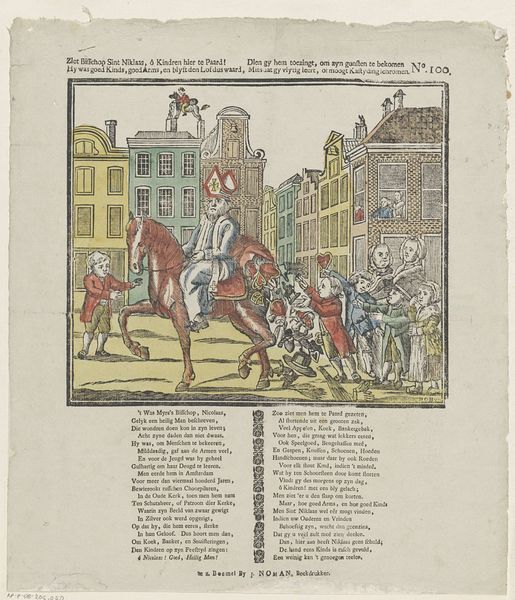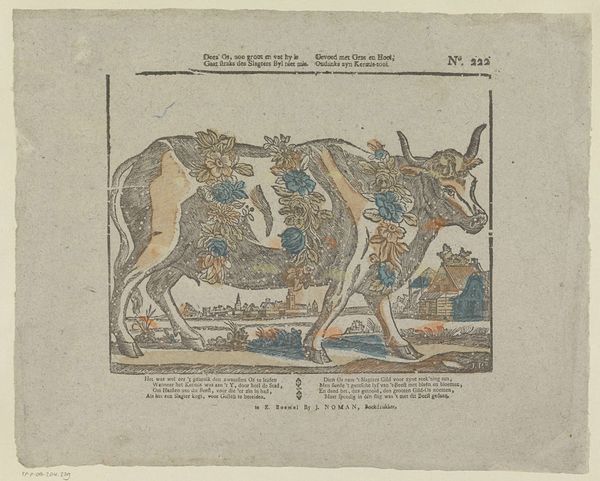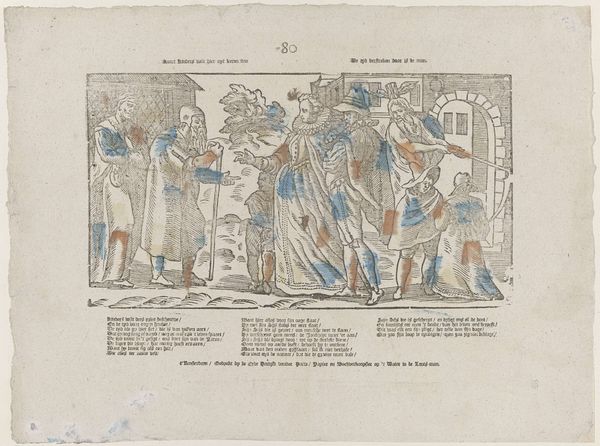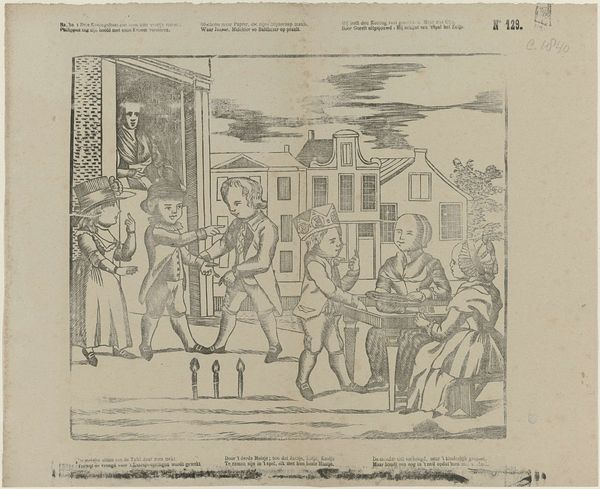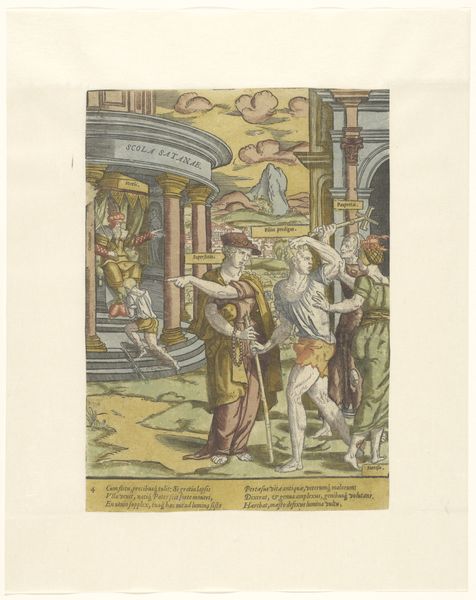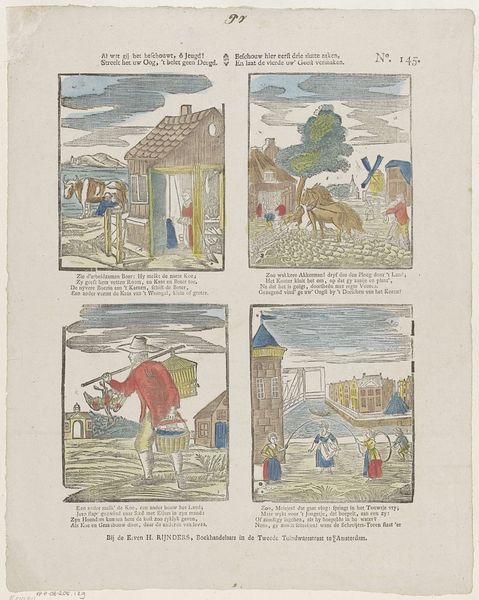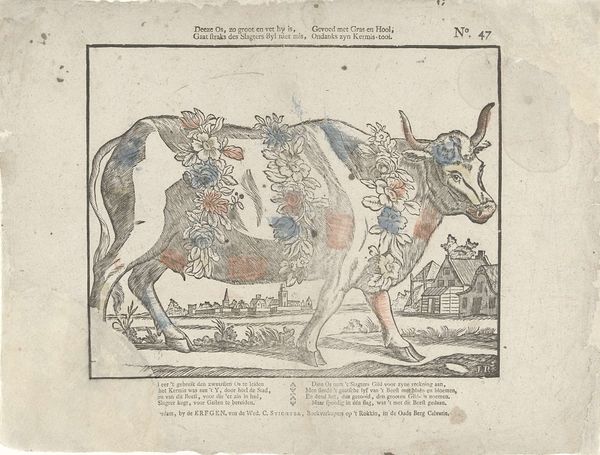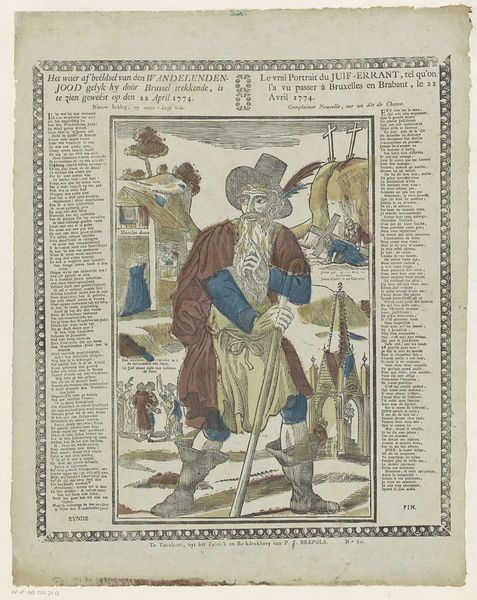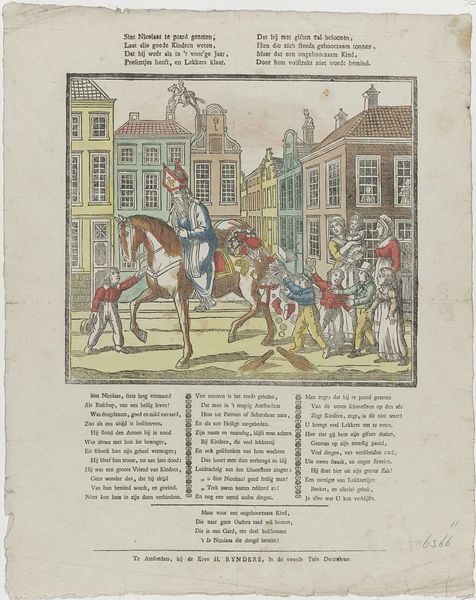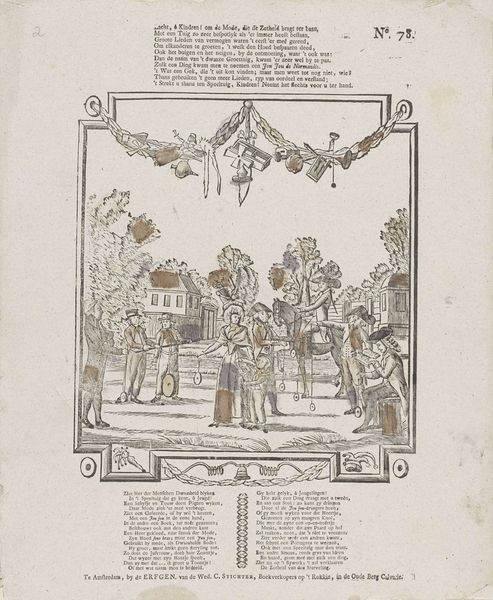![Sint Nicolaes te paerd gezeten, / Laet alle goede kindren weten [(...)] by Glenisson & Zonen](/_next/image?url=https%3A%2F%2Fd2w8kbdekdi1gv.cloudfront.net%2FeyJidWNrZXQiOiAiYXJ0ZXJhLWltYWdlcy1idWNrZXQiLCAia2V5IjogImFydHdvcmtzL2FiYWJmZDMxLTNiNWYtNDMzZi1hMmYwLTIxYjU2ZjQxY2QzZi9hYmFiZmQzMS0zYjVmLTQzM2YtYTJmMC0yMWI1NmY0MWNkM2ZfZnVsbC5qcGciLCAiZWRpdHMiOiB7InJlc2l6ZSI6IHsid2lkdGgiOiAxOTIwLCAiaGVpZ2h0IjogMTkyMCwgImZpdCI6ICJpbnNpZGUifX19&w=3840&q=75)
Sint Nicolaes te paerd gezeten, / Laet alle goede kindren weten [(...)] 1856 - 1900
0:00
0:00
lithograph, print
#
narrative-art
#
dutch-golden-age
#
lithograph
# print
#
figuration
#
folk-art
#
genre-painting
Dimensions: height 399 mm, width 321 mm
Copyright: Rijks Museum: Open Domain
Curator: This lithograph from the late 19th century by Glenisson & Zonen depicts Sint Nicolaes on horseback, part of a print titled "Sint Nicolaes te paerd gezeten, / Laet alle goede kindren weten [(...)]". It's interesting how folk traditions get represented in print. Editor: It’s rather charming, isn't it? But I'm also immediately struck by the rather… limited color palette. It's primarily pastels, creating a nostalgic feel, even beyond its actual age. What were the material constraints and the potential choices influencing this aesthetic? Curator: Well, as a lithograph intended for mass consumption, the publishers at Glenisson & Zonen were likely focused on cost-effectiveness. Simple color schemes are easier and cheaper to produce. But, more than that, color symbolism played a part: those soft hues reflect idealized notions of childhood innocence. The Saint and his presence brought good tidings, you see, the very softness conveying blessings, in a sense. Editor: It's striking that this artwork engages with a commercial element. Folk art traditions adapted through industrialization in service of something with the material properties to become widespread... Consider how the materiality shifts the symbolism entirely. It brings into question how the materials may have dictated and changed traditions and the ritual, in a consumer culture. Curator: Precisely. And beyond the economical choices, consider the role of the image itself in standardizing the image of Sinterklaas. Each print serves to reinforce specific cultural norms through the dissemination of a collective, almost manufactured, cultural memory. See the poems framing the main image, acting almost like advertisements. Editor: So the visual weight doesn't exist in a bubble here. The choice to produce many is so tied into distribution and consumerism which ultimately shape the symbolic narrative of what is even important for mass production! Curator: I agree entirely. The print reveals much about how symbols are both culturally constructed and materially conditioned. It allows a glance at how art reproduces both ideas, aesthetics, and its own function within a burgeoning consumer culture. Editor: Ultimately, this print offers a beautiful blend of art history and socio-material consideration, and has changed the holiday as we recognize it. Curator: A tangible reminder of how symbols endure through craft and cultural memory.
Comments
No comments
Be the first to comment and join the conversation on the ultimate creative platform.
